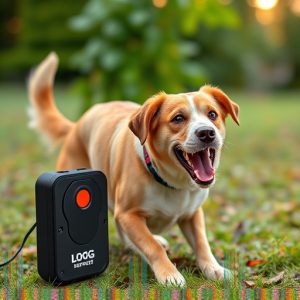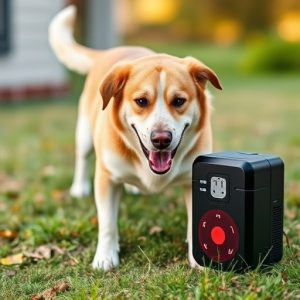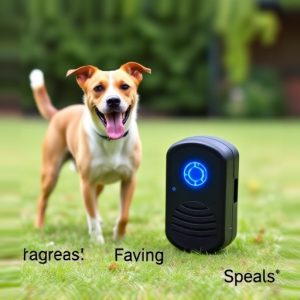Ultrasonic Dog Training: Power Consumption & Safety Review
Ultrasonic dog repellers, powered by efficient batteries, offer a humane solution for training issue…….
Ultrasonic dog repellers, powered by efficient batteries, offer a humane solution for training issues like barking and aggression. With 10+ hour battery life, these devices utilize inaudible sound waves to deter dogs without violence, outperforming traditional methods. However, safety is key; frequent use or close proximity might harm a dog's hearing. Repellers should be employed sparingly after exploring positive reinforcement techniques.
“Unleash a safer, more effective training experience with ultrasonic technology in dog repellers. This innovative tool has gained attention as a humane alternative to traditional training methods. Our comprehensive guide explores the science behind ultrasonic devices, their power consumption, and crucial safety aspects.
From understanding how these devices work to reviewing their energy efficiency, we demystify ultrasonic dog trainers. By the end, you’ll be equipped with knowledge to make an informed decision, ensuring a positive and safe training journey for both you and your furry companion.”
- Understanding Ultrasonic Technology for Dog Training: How It Works
- Dog Repeller Device Power Consumption: A Comprehensive Review
- Safety Considerations and Best Practices for Using Ultrasonic Dog Trainers
Understanding Ultrasonic Technology for Dog Training: How It Works
Ultrasonic technology has emerged as a innovative approach in dog training, offering a non-violent alternative to traditional methods. At its core, this technology utilises high-frequency sound waves that are inaudible to humans but can be effectively detected by dogs. A dog repeller device powered by ultrasonic technology emits these sounds when it senses movement or specific behaviour, such as barking. The frequency and intensity of the ultrasonic waves create an uncomfortable sensation for the dog, encouraging them to modify their actions.
Unlike traditional dog repellents that rely on scent or spray, ultrasonic devices focus on auditory cues. They are designed to be highly sensitive, with advanced power consumption features that ensure efficient operation while minimising battery usage. These devices are particularly effective in addressing issues like excessive barking, jumping on furniture, or unwanted aggression, making them a popular choice among pet owners seeking humane and effective training solutions.
Dog Repeller Device Power Consumption: A Comprehensive Review
Dog repeller devices utilizing ultrasonic technology have gained popularity as a humane alternative to traditional shock collars for training purposes. One significant aspect that potential buyers often consider is the power consumption of these devices – how much energy do they require to operate effectively? This Dog Repeller Device Power Consumption Review delves into the various factors influencing power usage, offering a comprehensive insight.
Each device has its own unique power draw, which can be attributed to design differences, ultrasonic output levels, and additional features like LED indicators or adjustable settings. Generally, these repellers are designed for long-lasting performance, with most models boasting battery life exceeding 10 hours on a single charge. Regular usage patterns typically involve intermittent activation, allowing for extended operational periods between recharges. Additionally, many manufacturers offer replaceable batteries, further extending the device’s lifespan and reducing overall power consumption costs.
Safety Considerations and Best Practices for Using Ultrasonic Dog Trainers
When using ultrasonic dog trainers, safety should be the top priority for pet owners and trainers alike. These devices emit high-frequency sound waves that are inaudible to humans but can effectively deter dogs from unwanted behaviors. However, not all ultrasonic dog repellers are created equal, and it’s crucial to consider power consumption and the potential impact on a dog’s hearing. Some devices may consume excessive energy, leading to frequent battery replacements, which can be inconvenient and costly. Moreover, while the sounds are generally safe for humans, prolonged exposure to high-frequency noise might still affect a dog’s hearing, especially in sensitive ears.
To ensure the best practices, always follow the manufacturer’s guidelines for use. These devices should be employed as a last resort, after attempting positive reinforcement training methods. Ultrasonic repellers should be used briefly and sparingly, targeting specific behaviors rather than continuous, prolonged use. Regularly review the device’s power consumption and consider models with energy-efficient designs. Additionally, keep the device at an appropriate distance from your dog to avoid any potential discomfort or harm, as recommended by professional trainers.
Ultrasonic technology offers a safe and effective approach to dog training, addressing behavioral issues without harm. As demonstrated in this review of dog repeller device power consumption, these devices are energy-efficient, making them both cost-effective and environmentally friendly. When used responsibly, following best practices and safety guidelines, ultrasonic trainers can significantly improve canine behavior. Thus, for pet owners seeking positive reinforcement methods, ultrasonic technology stands as a reliable, modern solution.


